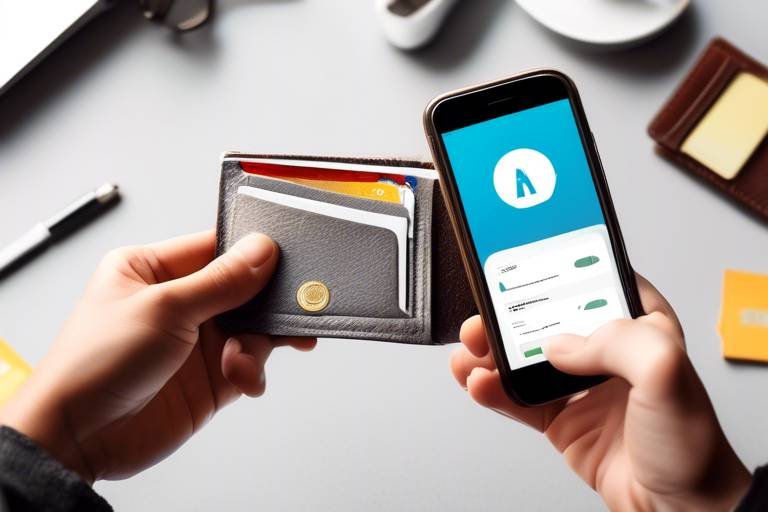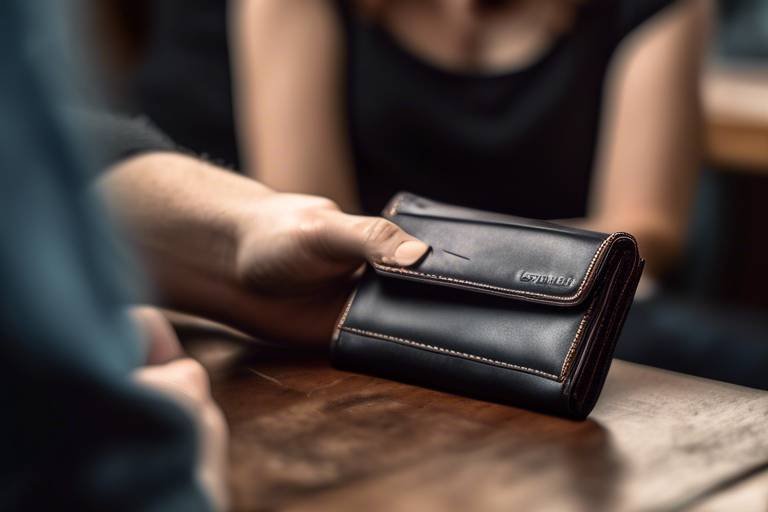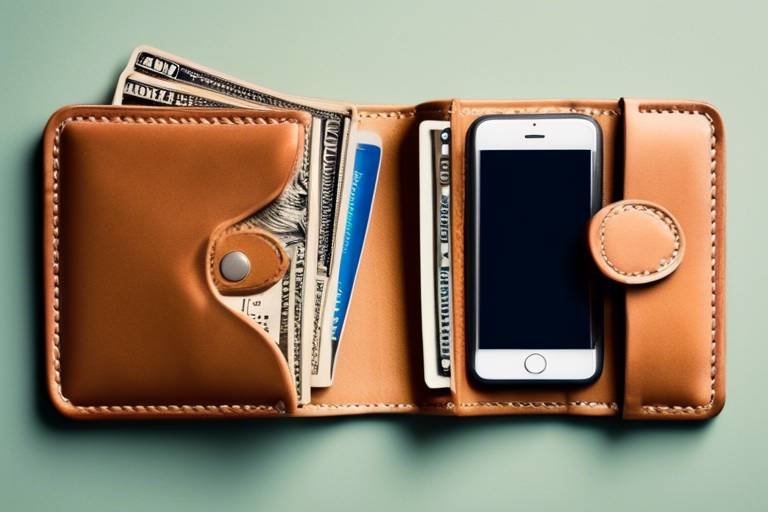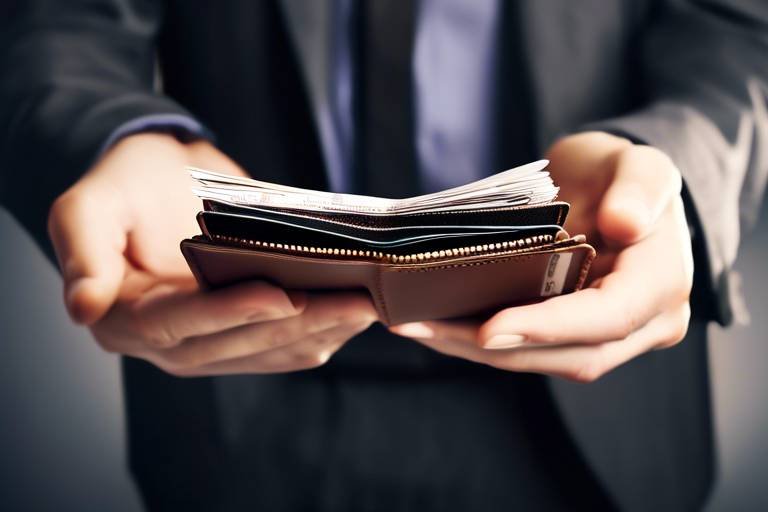How to Evaluate New Wallet Technologies - A Guide for Investors
In today's fast-paced digital world, understanding how to evaluate new wallet technologies is crucial for investors looking to dive into the vast ocean of cryptocurrency. With the rapid evolution of digital assets, making informed decisions can feel like navigating through a maze without a map. But fear not! This guide is here to illuminate the path, helping you assess emerging wallet technologies effectively. We will cover key factors, trends, and considerations that can empower you to make wise investments in this ever-changing landscape.
Wallet technologies serve as the backbone for managing digital assets, acting as a bridge between users and their cryptocurrencies. Think of a digital wallet as a virtual purse, where each coin represents a different asset. There are various types of wallets available, primarily categorized into hot wallets and cold wallets. Hot wallets are connected to the internet, making them convenient for daily transactions but potentially vulnerable to hacks. On the other hand, cold wallets are offline, providing enhanced security for long-term storage of cryptocurrencies. Understanding these distinctions is vital for investors aiming to protect their investments while maximizing accessibility.
When evaluating wallet technologies, certain features stand out as critical indicators of quality and reliability. Security is undoubtedly the foremost consideration, as the safety of your digital assets should be non-negotiable. Additionally, the user interface plays a significant role; a clean, intuitive design can make or break the user experience. Compatibility with various cryptocurrencies is another essential factor, ensuring that your wallet can support the assets you wish to hold. Lastly, transaction fees can eat into your profits, so understanding the cost structure associated with each wallet is crucial.
Security is paramount in wallet technologies, and various measures are employed to protect your digital assets. Encryption, two-factor authentication, and backup options are just a few of the protocols that enhance safety. Let's delve deeper into these aspects:
Understanding encryption standards is vital for evaluating wallet security. Encryption acts as a shield, protecting your sensitive information from prying eyes. Different wallets utilize varying methods of encryption, such as AES (Advanced Encryption Standard) and RSA (Rivest-Shamir-Adleman). The effectiveness of these methods can significantly impact the security of your wallet. Always look for wallets that employ robust encryption standards to safeguard your assets.
Two-factor authentication (2FA) adds an extra layer of security that can be a game-changer. Imagine having a double lock on your front door; it makes unauthorized access much more difficult. By requiring a second form of identification, such as a text message or an authentication app, 2FA effectively reduces the risk of unauthorized access to your wallet accounts. This feature has become a standard in the industry, and you should prioritize wallets that offer it.
A seamless user experience is critical for wallet adoption. If a wallet is difficult to navigate or lacks adequate customer support, users may quickly become frustrated and abandon it. Factors such as interface design and ease of use contribute significantly to a positive user experience. A well-designed wallet should feel intuitive, allowing users to manage their assets effortlessly. Additionally, responsive customer support can make a world of difference when issues arise, providing peace of mind to investors.
Keeping up with market trends is essential for investors. The cryptocurrency landscape is constantly evolving, and staying informed can give you a competitive edge. Recent innovations in wallet technologies, such as decentralized wallets and integration with decentralized finance (DeFi) platforms, are reshaping the investment landscape. These advancements not only enhance user experience but also open up new avenues for investment opportunities.
Decentralized wallets are gaining popularity due to their autonomy and enhanced security. Unlike traditional wallets, which often rely on centralized servers, decentralized wallets give users complete control over their funds. This independence can be likened to owning your home versus renting; you have the freedom to manage your assets without interference. However, potential drawbacks include the responsibility of safeguarding your private keys, which can be daunting for less tech-savvy users.
The integration of wallets with decentralized finance (DeFi) is revolutionizing investment strategies. Wallets are now facilitating access to a myriad of DeFi services, enabling users to lend, borrow, and trade directly from their wallets. This integration not only simplifies the user experience but also enhances the potential for earning passive income through yield farming and liquidity provision. Understanding how these integrations work can significantly impact your investment approach.
Regulatory frameworks can significantly influence wallet technologies. As governments worldwide grapple with how to regulate cryptocurrencies, understanding these regulations is crucial for investors. Compliance requirements vary by region and can affect the legitimacy and safety of wallet providers. Staying abreast of these changes can help you identify trustworthy wallets that adhere to legal obligations.
Understanding compliance requirements is crucial for investors. Wallet providers must meet various legal obligations to ensure user safety and maintain legitimacy. These may include Know Your Customer (KYC) regulations, anti-money laundering (AML) protocols, and data protection laws. By choosing wallets that comply with these regulations, you can mitigate risks associated with illegitimate operations.
Regulations can either hinder or promote wallet adoption. Stricter regulations may create barriers for new users, while a clear regulatory framework can foster trust and encourage wider adoption. It’s essential to consider how the regulatory environment affects user confidence and the overall growth of wallet technologies in the market. Investors should keep an eye on emerging regulations and their potential impact on the wallet landscape.
Q: What is the difference between hot and cold wallets?
A: Hot wallets are connected to the internet and are ideal for daily transactions, while cold wallets are offline and offer enhanced security for long-term storage.
Q: How can I ensure the security of my wallet?
A: Look for wallets that employ strong encryption standards, offer two-factor authentication, and provide backup options to enhance security.
Q: Why are decentralized wallets becoming popular?
A: Decentralized wallets provide users with autonomy and control over their funds, reducing reliance on third-party services.
Q: How do regulations impact wallet technologies?
A: Regulations can influence wallet adoption by establishing trust and legitimacy, but they can also create barriers for new users.

Understanding Wallet Technologies
In the rapidly evolving world of digital assets, wallet technologies play a pivotal role in how we manage, store, and transact with cryptocurrencies. Think of a digital wallet as a virtual equivalent of your traditional wallet, but instead of cash and cards, it holds your digital currencies. There are primarily two types of wallets: hot wallets and cold wallets. Understanding these types is crucial for any investor looking to navigate the cryptocurrency ecosystem effectively.
Hot wallets are connected to the internet, making them convenient for everyday transactions. They allow users to send and receive cryptocurrencies quickly, which is perfect for those who are actively trading or using their assets. However, this connectivity also makes hot wallets more vulnerable to hacking and cyber threats. On the other hand, cold wallets are offline storage solutions, such as hardware wallets or paper wallets, that provide enhanced security against online attacks. They are ideal for long-term storage, as they keep your assets safe from potential breaches.
When evaluating wallet technologies, it’s essential to consider the use cases for each type:
- Hot Wallets: Best for frequent transactions, trading, and easy access.
- Cold Wallets: Recommended for long-term holding and security-conscious investors.
Moreover, the choice between hot and cold wallets often boils down to individual needs and risk tolerance. For instance, if you’re someone who trades regularly, a hot wallet might be more suitable for you. Conversely, if you’re looking to hold your assets for an extended period without the need for frequent access, a cold wallet would be the way to go. It’s all about finding the right balance between accessibility and security.
Additionally, it’s worth noting that some wallets offer a hybrid approach, combining features of both hot and cold wallets. These wallets can provide users with the flexibility of online access while ensuring that a portion of their assets remains securely offline. As an investor, staying informed about these innovations can significantly enhance your investment strategy.
In summary, understanding the different wallet technologies is not just about knowing their definitions; it's about grasping their functionalities and implications in the broader context of cryptocurrency management. As you delve deeper into this digital landscape, remember that your choice of wallet can have a profound impact on your investment journey.

Key Features to Consider
When diving into the world of wallet technologies, it's essential to evaluate several key features that can significantly impact your investment decisions. These features not only determine the functionality of the wallet but also its overall reliability and user experience. As an investor, you want to ensure that the wallet you choose is not just a pretty interface, but a robust solution that meets your needs. Here are some critical attributes to keep in mind:
Security is undoubtedly the top priority for anyone dealing with digital assets. Imagine your wallet as a safe; you wouldn't want just anyone to have access to it, right? Look for wallets that implement advanced security measures such as encryption, which scrambles your data, making it unreadable to unauthorized users. Additionally, consider wallets that offer two-factor authentication (2FA), adding an extra layer of protection by requiring not just a password but also a second form of identification, like a text message code.
Next, let's talk about the user interface. A wallet's design should be intuitive and user-friendly. If navigating through features feels like deciphering a complex puzzle, you might want to look elsewhere. A good wallet should allow you to manage your assets with ease, providing clear options for sending, receiving, and tracking your transactions. Customer support also plays a vital role here; having access to help when you need it can make a world of difference in your overall experience.
Compatibility is another crucial factor. With the ever-evolving landscape of cryptocurrencies, you want a wallet that supports a wide range of digital assets. Some wallets only cater to popular coins, while others embrace a diverse portfolio, allowing you to store everything from Bitcoin to lesser-known altcoins. This flexibility can save you the hassle of managing multiple wallets.
Lastly, let’s not forget about transaction fees. While some wallets may seem appealing at first glance, hidden fees can quickly add up, eating into your profits. Always read the fine print and understand how fees are structured. Compare different wallets and see which ones offer the best value for the services provided.
In summary, when evaluating wallet technologies, prioritize the following features:
- Security: Look for strong encryption and two-factor authentication.
- User Experience: Ensure a user-friendly interface and reliable customer support.
- Compatibility: Choose wallets that support a wide variety of cryptocurrencies.
- Transaction Fees: Be aware of any hidden costs that could affect your investments.
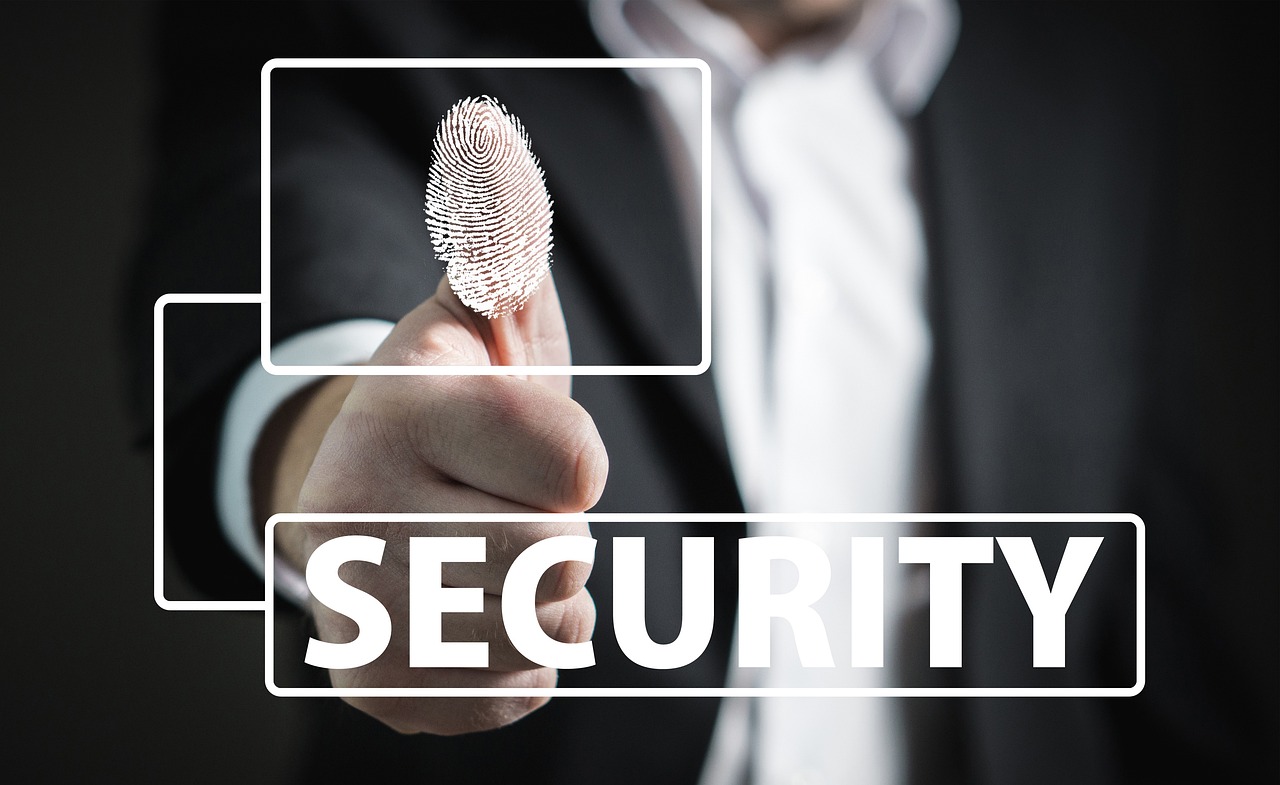
Security Measures
When it comes to wallet technologies, security is not just a feature; it’s the foundation upon which trust is built. In an era where digital assets are becoming increasingly valuable, the measures taken to protect them are more important than ever. Think of your wallet as a digital vault—if the vault isn’t secure, everything inside it is at risk. So, what should investors look for when evaluating the security of a wallet?
First and foremost, encryption protocols play a critical role in safeguarding sensitive information. Encryption acts like a lock on your vault, ensuring that only authorized users can access the contents. There are various encryption methods, ranging from basic to advanced, and understanding these can help you gauge how secure a wallet truly is. For instance, AES (Advanced Encryption Standard) is widely regarded as one of the most secure encryption methods available today.
Another essential security feature is two-factor authentication (2FA). This is akin to having a second lock on your vault. Even if someone manages to obtain your password, they would still need a second piece of information to gain access. This could be a code sent to your mobile device or an authentication app. The importance of 2FA cannot be overstated; it significantly reduces the risk of unauthorized access, making it much harder for potential hackers to infiltrate your wallet.
Backup options are also vital. Imagine losing the key to your vault without any way to retrieve it. Wallets that offer robust backup solutions ensure that you can recover your assets in case of device failure or loss. Whether it’s through seed phrases or encrypted backups stored in the cloud, having a reliable recovery method is essential for peace of mind.
Here's a quick overview of the key security measures to consider:
| Security Measure | Description | Importance |
|---|---|---|
| Encryption | Protects data through advanced algorithms | High |
| Two-Factor Authentication | Requires two forms of identification | Critical |
| Backup Options | Ensures recovery of assets if lost | Essential |
In conclusion, security measures in wallet technologies should never be an afterthought. As an investor, you must prioritize these features to ensure your digital assets are well-protected. After all, in the world of cryptocurrencies, a secure wallet is not just a convenience; it’s a necessity.
- What is the most secure type of wallet?
Hardware wallets are generally considered the most secure because they store your private keys offline.
- How can I ensure my wallet is safe?
Use wallets with strong encryption, enable two-factor authentication, and regularly back up your wallet.
- What should I do if I lose access to my wallet?
If you've set up backup options, you can recover your wallet using your seed phrase or recovery keys.

Encryption Standards
When it comes to evaluating wallet technologies, understanding is crucial. Encryption acts as the first line of defense for your digital assets, ensuring that sensitive information remains confidential and secure from prying eyes. Think of encryption as a complex lock on a treasure chest—only those with the right key can access what's inside. In the world of cryptocurrency wallets, there are various encryption methods employed to protect user data, and each has its own strengths and weaknesses.
One of the most widely used encryption standards is AES (Advanced Encryption Standard). This method is favored for its robust security features and efficiency. AES utilizes symmetric key encryption, meaning the same key is used for both encryption and decryption. This makes it faster than asymmetric encryption, which uses a pair of keys. For wallet technologies, AES can provide a solid layer of protection against unauthorized access.
Another important encryption method is RSA (Rivest-Shamir-Adleman), which is an asymmetric encryption algorithm. RSA is commonly used for securely transmitting data over the internet. It relies on a pair of keys: a public key for encryption and a private key for decryption. This method is particularly useful for wallet technologies that require secure transactions between users without needing to share sensitive information.
To give you a clearer picture, here’s a comparison table of these encryption standards:
| Encryption Standard | Type | Key Management | Use Cases |
|---|---|---|---|
| AES | Symmetric | Single Key | Data encryption in wallets, file encryption |
| RSA | Asymmetric | Key Pair | Secure data transmission, digital signatures |
While these encryption standards offer significant protection, it's essential to remember that no system is entirely foolproof. The effectiveness of encryption largely depends on how well it is implemented. For instance, if a wallet provider fails to use strong passwords or allows easy access to the encryption keys, even the best encryption can be compromised. Therefore, it's vital for investors to scrutinize how wallet technologies implement these standards and what additional security measures they have in place.
In conclusion, understanding encryption standards is not just a technical detail; it’s a fundamental aspect of ensuring the safety of your digital assets. As you evaluate different wallet technologies, keep an eye on the encryption methods they employ. After all, in the digital world, your security is only as strong as the encryption that guards it.
- What is the importance of encryption in wallet technologies? Encryption protects sensitive data from unauthorized access, ensuring the safety of your digital assets.
- Are all encryption methods equally secure? No, different encryption methods have varying levels of security and efficiency. It's essential to understand the strengths and weaknesses of each.
- How can I ensure my wallet uses strong encryption? Look for wallets that utilize well-known encryption standards like AES or RSA and assess their implementation practices.
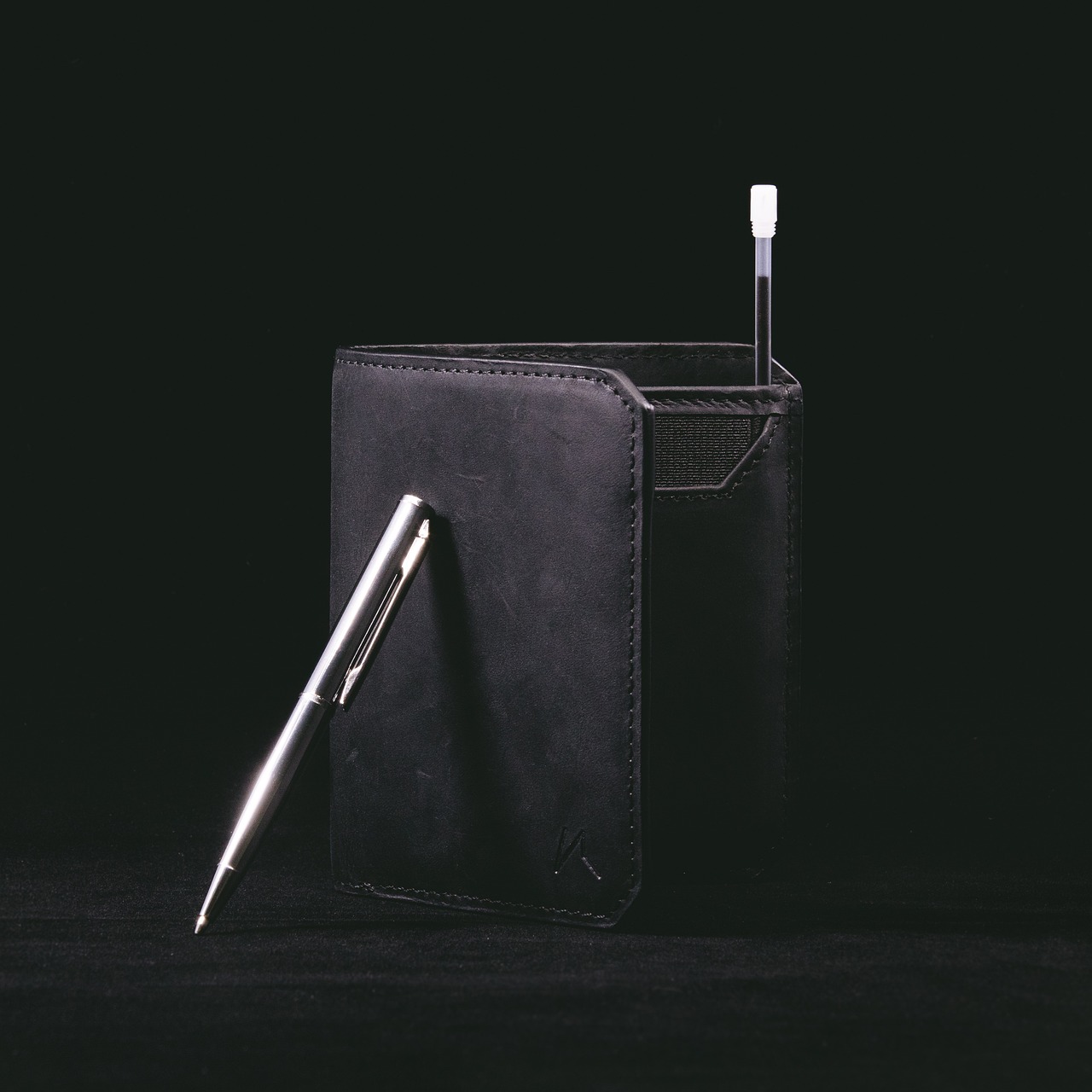
Two-Factor Authentication
Two-Factor Authentication (2FA) is like having a double lock on your front door—it adds an extra layer of security to your wallet, making it significantly harder for unauthorized users to gain access. In the digital realm, where threats are lurking around every corner, 2FA has become an essential feature for anyone serious about protecting their assets. Instead of relying solely on a password, which can be compromised, 2FA requires a second piece of information, typically something only the user possesses, such as a mobile device or a hardware token.
Imagine you’re trying to access your wallet. First, you enter your password, which is the first factor. Then, you receive a code via SMS or an authenticator app, which you must enter to gain access. This two-step process not only enhances security but also gives users peace of mind knowing that even if someone steals their password, they still can’t get into the account without that second factor.
There are several methods of implementing 2FA, each with its unique benefits and potential drawbacks. Here’s a quick rundown of the most common types:
- SMS Verification: A text message is sent to your phone with a code that you must enter. While convenient, it can be vulnerable to SIM swapping attacks.
- Authenticator Apps: Apps like Google Authenticator or Authy generate time-based codes that change every 30 seconds. These are more secure than SMS since they don’t rely on your phone number.
- Hardware Tokens: Devices like YubiKey provide a physical key that you must insert into your device to access your wallet. This is one of the most secure options available.
While 2FA is not foolproof, it significantly reduces the risk of unauthorized access. It's important to choose a wallet that offers robust 2FA options and to understand how to set it up properly. Remember, a strong password combined with 2FA is like having a safe that’s both locked and hidden—it’s much more challenging for intruders to break in.
In the end, adopting Two-Factor Authentication is a no-brainer for anyone looking to secure their digital assets. It’s a simple step that can save you from potential financial loss and the stress of dealing with a compromised account. So, before you dive into the world of digital wallets, make sure that 2FA is part of your security toolkit.
- What is Two-Factor Authentication?
Two-Factor Authentication (2FA) is a security measure that requires two forms of identification before granting access to an account, enhancing protection against unauthorized access. - Why is 2FA important for wallets?
It provides an additional layer of security beyond just a password, making it much harder for hackers to access your wallet even if they have your password. - What are the different types of 2FA?
Common types include SMS verification, authenticator apps, and hardware tokens, each with its own advantages and disadvantages. - Can 2FA be bypassed?
While 2FA significantly increases security, it is not foolproof. Users should remain vigilant and employ strong passwords and other security measures.

User Experience
When it comes to wallet technologies, is not just a buzzword; it's the heartbeat of adoption. Imagine walking into a store where everything is chaotic, and the staff is unhelpful. You'd likely turn around and leave, right? The same principle applies to digital wallets. A seamless and intuitive user experience can make all the difference in whether someone chooses to use a wallet or abandons it for a competitor. Factors such as interface design, ease of use, and customer support play pivotal roles in shaping this experience.
First off, let's talk about interface design. A well-designed interface is like a welcoming storefront; it invites users in and encourages them to explore. Users should be able to navigate through the wallet's features without feeling overwhelmed. This means clear menus, logical layouts, and visually appealing elements that guide the user effortlessly. If the wallet is cluttered or confusing, users will likely feel frustrated and may even abandon the wallet altogether.
Next up is ease of use. This is where the rubber meets the road. A wallet should not require a Ph.D. in technology to operate. For instance, consider the process of sending or receiving cryptocurrency. If it takes more than a few taps or clicks, users may lose interest. Therefore, wallets that streamline these processes and minimize the number of steps required to complete transactions will stand out in a crowded market.
Additionally, customer support is another critical aspect of user experience. Imagine you’re in a bind, unable to access your funds or navigate a feature. Having prompt and effective customer support can turn a potential disaster into a minor inconvenience. Wallets that offer multiple channels for support—like live chat, email, and comprehensive FAQs—are more likely to retain users.
In summary, the user experience of a wallet technology can make or break its success. By focusing on interface design, ease of use, and customer support, wallet providers can create an environment that not only attracts users but also keeps them engaged. After all, in a world where options abound, why would someone stick with a wallet that feels clunky or uninviting?
To further understand the importance of user experience, let's take a look at a comparison table that highlights key features of popular wallet technologies:
| Wallet Type | Interface Design | Ease of Use | Customer Support |
|---|---|---|---|
| Hot Wallet | Modern and Intuitive | Very Easy | 24/7 Support |
| Cold Wallet | Functional but Basic | Moderately Easy | Email Support |
| Decentralized Wallet | Varies Widely | Can Be Complex | Community Forums |
This table illustrates that while hot wallets generally excel in user experience, decentralized wallets may pose challenges for less tech-savvy users. As an investor, recognizing these nuances can help you make better decisions when evaluating wallet technologies.
In conclusion, prioritizing user experience is essential for the success of wallet technologies. A wallet that is easy to use, visually appealing, and backed by strong customer support will not only attract users but also foster loyalty, creating a win-win situation for both users and wallet providers.
- What is the most important feature of a wallet?
Security is often considered the most critical feature, but user experience plays a significant role in adoption.
- How can I determine if a wallet is easy to use?
Look for user reviews, tutorials, and try the wallet yourself to gauge its interface and functionality.
- What should I do if I encounter issues with my wallet?
Reach out to customer support through available channels, and check community forums for potential solutions.

Market Trends and Innovations
In the ever-evolving world of digital finance, keeping an eye on market trends and innovations in wallet technologies is crucial for investors. As we dive deeper into this digital landscape, we see a surge in new features and functionalities that not only enhance user experience but also offer greater security and accessibility. With the rise of cryptocurrencies and decentralized finance (DeFi), the demand for sophisticated wallet solutions has skyrocketed. This section will explore some of the most exciting trends shaping the future of wallet technologies.
One of the standout trends is the emergence of decentralized wallets. Unlike traditional wallets that rely on centralized servers, decentralized wallets empower users by giving them complete control over their private keys and funds. This autonomy is appealing, especially in a world where data breaches and hacks are becoming all too common. However, while decentralized wallets offer enhanced security and privacy, they also come with their own set of challenges, such as the need for users to take personal responsibility for their assets. The question arises: are users ready to embrace this level of responsibility?
Another significant innovation is the integration of wallet technologies with DeFi platforms. As DeFi continues to disrupt traditional financial systems, wallets are evolving to facilitate seamless access to a variety of decentralized services. This integration allows users to not only store their digital assets but also engage in lending, borrowing, and trading directly from their wallets. Imagine having a single tool that allows you to manage your investments, earn interest, and trade—all while maintaining complete control over your funds. This is the promise that wallet innovations bring to the table.
Moreover, we cannot overlook the importance of user-friendly interfaces in driving wallet adoption. As more people enter the cryptocurrency space, the need for wallets that are intuitive and easy to navigate becomes paramount. Developers are increasingly focusing on creating interfaces that cater to both seasoned investors and newcomers alike. This shift towards simplicity is crucial because, let's face it, if a wallet is too complicated to use, potential users may simply walk away.
To further illustrate the current trends, let's take a look at a table summarizing some of the key innovations in wallet technologies:
| Trend | Description | Impact |
|---|---|---|
| Decentralized Wallets | Wallets that give users full control over their private keys. | Enhanced security and privacy, but increased responsibility for users. |
| Integration with DeFi | Wallets that allow users to access decentralized finance services. | Streamlined investment processes and greater financial autonomy. |
| User-Friendly Interfaces | Wallets designed for ease of use and accessibility. | Increased adoption among new users and less friction in transactions. |
As these trends continue to unfold, investors must remain vigilant and adaptable. The landscape of wallet technologies is not static; it’s dynamic and full of potential. Keeping abreast of these innovations will not only help investors make informed decisions but also position them to capitalize on emerging opportunities. So, are you ready to dive into the world of wallet technologies and explore the possibilities they offer?
What are decentralized wallets?
Decentralized wallets are digital wallets that allow users to manage their own private keys without relying on a centralized authority. This gives users greater control over their funds and enhances security.
How do wallets integrate with DeFi platforms?
Wallets can connect directly to DeFi platforms, enabling users to lend, borrow, and trade cryptocurrencies without needing to transfer their assets to a centralized exchange.
Why is user experience important in wallet technology?
A positive user experience is crucial for adoption. If a wallet is difficult to navigate, users may be deterred from using it, regardless of its security features.
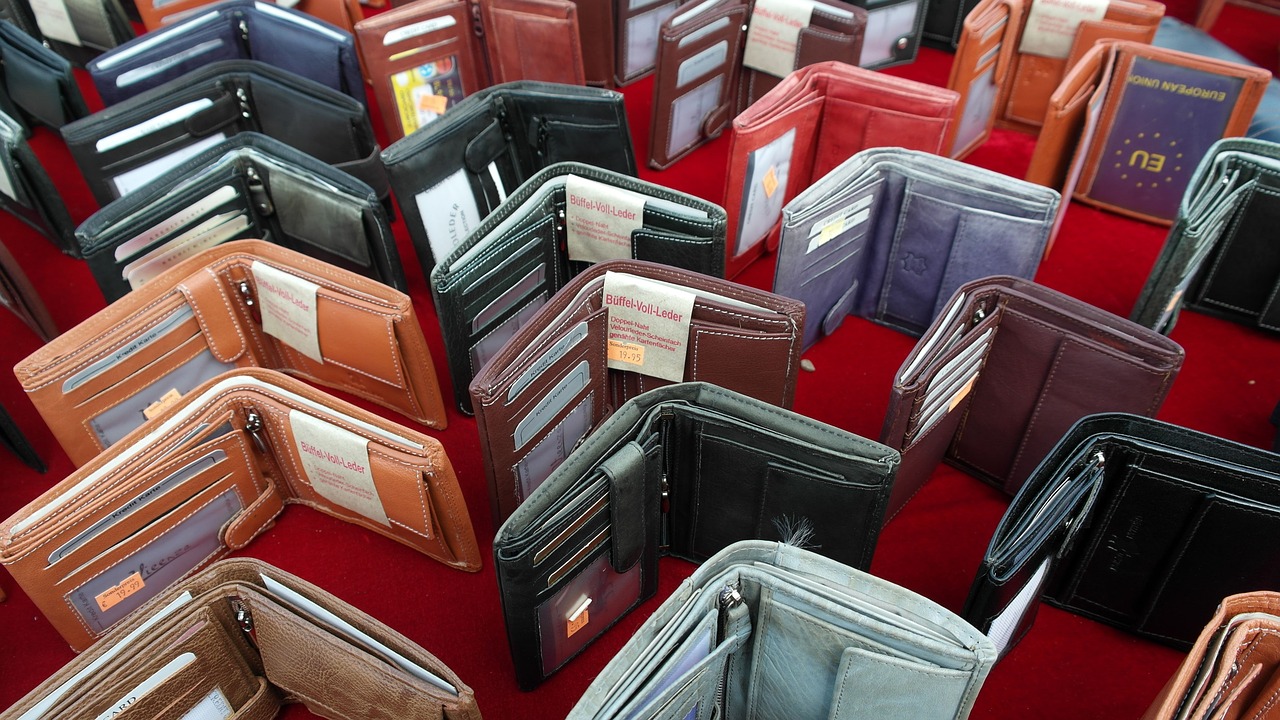
Decentralized Wallets
Decentralized wallets have emerged as a revolutionary solution in the cryptocurrency landscape, offering users a greater degree of control and autonomy over their digital assets. Unlike traditional wallets, which often require a third party to manage and store private keys, decentralized wallets enable users to retain full ownership of their keys. This means that your funds are not held by an intermediary, reducing the risk of hacks or mismanagement. Imagine having a safe where you alone hold the key, rather than entrusting it to someone else. This autonomy is one of the primary reasons why decentralized wallets are gaining traction among savvy investors.
However, while the benefits are enticing, there are also potential drawbacks to consider. For instance, the responsibility of securing your private keys falls entirely on you. If you lose your keys or forget your password, there is no customer support line to call for help. This aspect can be daunting for newcomers who are used to the safety nets provided by centralized services. To illustrate this point, let’s look at some key factors that highlight the advantages and challenges of decentralized wallets:
| Advantages | Challenges |
|---|---|
| Full Control: Users have complete ownership of their private keys. | Responsibility: Users must manage their own security and backups. |
| Increased Privacy: Transactions are often more private compared to centralized wallets. | Complexity: The user interface can be less intuitive for beginners. |
| No Intermediaries: Reduces risk of hacks associated with centralized exchanges. | Limited Support: Lack of customer support can be a hurdle for some users. |
In addition to these factors, decentralized wallets often support a wide range of cryptocurrencies and tokens, making them versatile tools for investors looking to diversify their portfolios. Furthermore, many of these wallets integrate seamlessly with decentralized applications (dApps), allowing users to engage in activities like trading, lending, and yield farming directly from their wallets. This integration opens up a world of possibilities, positioning decentralized wallets at the forefront of the evolving digital finance landscape.
As an investor, it’s essential to stay informed about the developments in decentralized wallet technologies. With the rapid pace of innovation in the crypto space, new features and improvements are constantly being introduced. Keeping an eye on these trends can help you make informed decisions and leverage the advantages that decentralized wallets offer.
- What is a decentralized wallet? A decentralized wallet allows users to manage their own private keys without the need for a third-party intermediary.
- Are decentralized wallets safe? They can be safe if users take proper precautions to secure their private keys and passwords.
- Can I recover my funds if I lose my private key? Unfortunately, if you lose your private key, you will not be able to recover your funds.
- Do decentralized wallets support multiple cryptocurrencies? Yes, many decentralized wallets support a wide variety of cryptocurrencies and tokens.

Integration with DeFi
The integration of wallet technologies with decentralized finance (DeFi) is a game changer in the realm of digital investments. Imagine having a single gateway that allows you to access a plethora of financial services without the need for traditional banking intermediaries—this is the promise of DeFi. Wallets that support DeFi not only store your cryptocurrencies but also empower you to lend, borrow, trade, and earn interest on your assets. This functionality transforms wallets from mere storage solutions into powerful financial tools.
One of the most significant advantages of using wallets integrated with DeFi is the increased autonomy they offer. Users can manage their assets directly, without relying on third parties. This self-custody aspect is crucial for those who prioritize control over their financial resources. But it doesn't stop there; the integration also opens up avenues for yield farming and liquidity provision, allowing users to earn passive income on their holdings. Just think of it as having your money working for you, rather than just sitting idle.
However, it's essential to approach this integration with a clear understanding of the risks involved. While the potential for high returns is enticing, the DeFi space is also known for its volatility and the possibility of smart contract vulnerabilities. Investors must conduct thorough research and due diligence when selecting wallets that provide DeFi capabilities. A well-informed choice can lead to substantial rewards, but neglecting to assess the risks could result in significant losses.
Moreover, wallets that integrate with DeFi platforms often offer features such as real-time analytics and portfolio tracking, which are invaluable for making informed investment decisions. Users can monitor their assets' performance, track market trends, and adjust their strategies accordingly. This level of insight is akin to having a financial advisor at your fingertips, guiding you through the complexities of the DeFi landscape.
In conclusion, the integration of wallet technologies with DeFi is reshaping how we think about digital finance. It presents an opportunity for greater financial independence and innovative investment strategies. However, as with any investment, it's crucial to stay informed and be aware of the challenges that come with this exciting new frontier.
- What is DeFi? DeFi, or decentralized finance, refers to a financial system built on blockchain technology that allows users to perform financial transactions without intermediaries.
- How do wallets integrate with DeFi? Wallets integrate with DeFi by allowing users to access various decentralized applications (dApps) for lending, borrowing, and trading directly from their wallets.
- What are the risks of using DeFi wallets? Risks include smart contract vulnerabilities, market volatility, and the potential for loss of funds if proper security measures aren't taken.
- Can I earn passive income with DeFi wallets? Yes, many DeFi wallets offer opportunities for yield farming, staking, and liquidity provision, allowing users to earn interest on their assets.

Regulatory Considerations
When diving into the world of wallet technologies, understanding is like having a compass in uncharted waters. Regulations can significantly affect how wallet technologies operate and evolve, making it essential for investors to stay informed. As the digital asset landscape continues to grow, governments and regulatory bodies worldwide are stepping up their efforts to create frameworks that ensure the safety and legitimacy of these technologies. But what does this mean for you as an investor?
First and foremost, it's crucial to recognize that regulations can vary dramatically from one region to another. For instance, while some countries embrace cryptocurrency and its associated wallet technologies, others may impose strict regulations or even outright bans. This creates a patchwork of compliance requirements that wallet providers must navigate. Understanding these differences helps investors gauge the potential risks and rewards associated with specific wallet technologies.
One important aspect of regulatory considerations is the compliance requirements that wallet providers must adhere to. These can include anti-money laundering (AML) measures, know your customer (KYC) protocols, and data protection regulations. For example, many jurisdictions require wallet providers to verify the identity of their users to prevent illicit activities. This not only protects users but also helps build trust in the technology. Here’s a quick overview of common compliance requirements:
| Compliance Requirement | Description |
|---|---|
| Anti-Money Laundering (AML) | Measures to prevent money laundering activities. |
| Know Your Customer (KYC) | Verification of user identities to ensure legitimacy. |
| Data Protection | Compliance with laws protecting personal data. |
Moreover, the impact of regulations on adoption cannot be overstated. In markets where regulations are clear and supportive, users tend to have higher trust in wallet technologies. This trust is vital for adoption; after all, who wants to invest in a technology that feels risky or unregulated? Conversely, in regions where regulations are ambiguous or overly restrictive, potential users may shy away from adopting wallet technologies altogether, fearing legal repercussions or losing access to their funds.
As an investor, staying updated on regulatory changes is not just a good idea—it's a necessity. Regulatory landscapes can shift rapidly, influenced by political climates, technological advancements, and public sentiment. Therefore, regularly reviewing news sources, industry reports, and updates from regulatory bodies can provide valuable insights into how these changes might affect your investments.
In summary, understanding regulatory considerations is vital for anyone looking to invest in wallet technologies. By keeping an eye on compliance requirements and the broader regulatory landscape, investors can make more informed decisions that align with their risk tolerance and investment goals. Remember, in the world of digital assets, knowledge is power, and being informed about regulations can be the difference between a successful investment and a costly mistake.
- What are the main regulatory challenges for wallet technologies? Regulatory challenges often include compliance with AML/KYC laws, data protection regulations, and varying legal interpretations across jurisdictions.
- How do regulations impact the security of wallet technologies? Regulations can enhance security by enforcing standards that wallet providers must follow, thereby protecting users from fraud and theft.
- Are there specific countries with favorable regulations for wallet technologies? Yes, countries like Switzerland and Singapore are known for their supportive regulatory environments for cryptocurrencies and wallet technologies.

Compliance Requirements
When diving into the world of wallet technologies, understanding is like having a roadmap in a new city; it guides you through the twists and turns of regulations that can impact your investments. The landscape of digital wallets is not just about innovation and user experience; it's also heavily influenced by legal frameworks that can vary significantly across different jurisdictions. As an investor, being aware of these regulations is crucial to ensuring that your chosen wallet provider operates within the law, thus safeguarding your digital assets.
Compliance requirements typically encompass a range of legal obligations that wallet providers must adhere to, including anti-money laundering (AML) regulations, know your customer (KYC) protocols, and data protection laws. These regulations are designed to prevent illicit activities and protect users from potential fraud. For instance, a reputable wallet provider will implement stringent KYC measures to verify the identity of its users, which not only helps in building trust but also ensures compliance with local and international laws.
Here are some key compliance aspects to consider:
- Anti-Money Laundering (AML): Wallet providers must have systems in place to detect and report suspicious activities to prevent money laundering.
- Know Your Customer (KYC): This involves verifying the identities of users to ensure they are not involved in illegal activities.
- Data Protection: Compliance with data protection laws, such as the General Data Protection Regulation (GDPR) in Europe, is essential to safeguard user information.
Moreover, the impact of regulatory compliance extends beyond just legal obligations. It can significantly affect user trust and the overall reputation of wallet technologies. Users are more likely to adopt wallets that demonstrate a commitment to compliance, as it reassures them that their funds and personal information are secure. In contrast, wallets that operate in a regulatory gray area may deter potential users due to fears of fraud or legal repercussions.
To illustrate the importance of compliance, consider the following table that outlines some common regulations and their implications for wallet providers:
| Regulation | Description | Implications for Wallet Providers |
|---|---|---|
| AML | Regulations aimed at preventing money laundering activities. | Must implement monitoring systems and report suspicious transactions. |
| KYC | Procedures for verifying the identity of users. | Need to collect and verify user information before allowing transactions. |
| GDPR | Regulation for data protection and privacy in the European Union. | Must ensure user data is processed lawfully and transparently. |
In conclusion, compliance requirements are not merely bureaucratic hurdles; they are essential for building a secure and trustworthy ecosystem around wallet technologies. As an investor, understanding these requirements not only helps you select the right wallet provider but also enhances your overall investment strategy by minimizing risks associated with regulatory non-compliance.
Q: What are compliance requirements in wallet technologies?
A: Compliance requirements refer to the legal obligations that wallet providers must adhere to, including anti-money laundering (AML) regulations, know your customer (KYC) protocols, and data protection laws.
Q: Why is compliance important for wallet providers?
A: Compliance is crucial as it helps prevent illicit activities, builds user trust, and ensures the legitimacy of the wallet provider, safeguarding users' digital assets.
Q: How can I verify if a wallet provider is compliant?
A: You can check if the wallet provider has clear KYC and AML policies, is transparent about its operations, and adheres to relevant regulations in your jurisdiction.

Impact of Regulations on Adoption
The impact of regulations on the adoption of wallet technologies cannot be overstated. In a landscape where digital assets are rapidly evolving, regulatory frameworks are often the backbone that determines how these technologies are embraced by the public. Think of regulations as a double-edged sword; they can either pave the way for widespread adoption or create barriers that hinder progress. For instance, stringent regulations can instill a sense of trust among users, making them more willing to adopt new technologies. Conversely, overly restrictive regulations may lead to confusion and skepticism, ultimately slowing down the growth of wallet technologies.
One of the key aspects to consider is how regulations can enhance user trust. When a wallet provider complies with established regulations, it signals to users that their assets are being managed in a secure and legitimate manner. This is particularly crucial in the world of cryptocurrencies, where scams and fraud are prevalent. For example, compliance with anti-money laundering (AML) and know your customer (KYC) regulations can reassure users that their transactions are being monitored and that the platform is operating within legal boundaries. As a result, users may feel more secure in using these wallets for their transactions.
On the flip side, regulations can also create challenges for wallet providers. For example, if a regulatory body imposes high compliance costs or complex reporting requirements, it may deter new entrants into the market. This can lead to a lack of competition, ultimately limiting options for consumers. Additionally, if regulations vary significantly from one jurisdiction to another, it complicates the global landscape for wallet technologies. Providers may struggle to navigate these differences, which can stifle innovation and slow down the overall adoption of new wallet solutions.
Moreover, the impact of regulations extends beyond just compliance. They can shape the features and functionalities that wallet providers offer. For instance, in regions where regulations require robust security measures, wallet providers may invest heavily in advanced security features, enhancing the overall user experience. However, in less regulated environments, providers might prioritize speed and convenience over security, which could lead to vulnerabilities.
To summarize, the relationship between regulations and wallet adoption is complex and multifaceted. While regulations can promote trust and security, they can also pose challenges that may limit innovation and competition. As an investor, it's crucial to keep an eye on the regulatory landscape and understand how these factors might influence your investment decisions in wallet technologies.
- What are the main regulations affecting wallet technologies?
Regulations like AML and KYC are significant in ensuring wallet providers operate within legal boundaries, protecting users from fraud. - How do regulations impact user trust?
Compliance with regulations can enhance user trust, as it indicates that a wallet provider is legitimate and prioritizes the safety of its users. - Can regulations hinder innovation in wallet technologies?
Yes, overly restrictive regulations can create barriers for new entrants, limiting competition and potentially stifling innovation. - How can investors stay informed about regulatory changes?
Investors should follow industry news, subscribe to relevant newsletters, and engage with community forums to stay updated on regulations.
Frequently Asked Questions
- What are wallet technologies, and why are they important?
Wallet technologies are essential tools for managing digital assets like cryptocurrencies. They allow users to store, send, and receive various digital currencies securely. Understanding these technologies is crucial for investors looking to navigate the ever-evolving landscape of digital finance.
- What is the difference between hot wallets and cold wallets?
Hot wallets are connected to the internet and are typically used for daily transactions, making them more convenient but also more vulnerable to hacks. Cold wallets, on the other hand, are offline storage solutions that provide enhanced security for long-term asset holding, making them less susceptible to online threats.
- How can I ensure the security of my digital assets?
To secure your digital assets, choose wallets that employ robust security measures like encryption, two-factor authentication, and regular backups. Always keep your private keys confidential and consider using cold storage for larger amounts of cryptocurrency.
- What features should I prioritize when selecting a wallet?
When choosing a wallet, focus on features such as security, user interface, compatibility with different cryptocurrencies, and transaction fees. A wallet that is user-friendly and supports a wide range of assets can significantly enhance your experience.
- What are decentralized wallets, and what are their benefits?
Decentralized wallets operate without a central authority, giving users greater control over their funds. They enhance privacy and security but can be more complex to use. The primary benefit is that you hold your private keys, reducing the risk of hacks associated with centralized services.
- How do wallet technologies integrate with decentralized finance (DeFi)?
Wallets that integrate with DeFi platforms allow users to access various financial services, such as lending and trading, directly from their wallets. This integration simplifies transactions and enhances the overall investment experience in the DeFi space.
- What regulatory considerations should I keep in mind?
Regulatory frameworks vary by region and can affect how wallets operate. It's essential to be aware of compliance requirements and how they impact the legitimacy and safety of wallet providers. Understanding these regulations can help you make informed decisions about where to store your assets.
- How do regulations impact the adoption of wallet technologies?
Regulations can either promote or hinder wallet adoption. Clear regulations can enhance user trust and encourage more people to use wallet technologies, while overly strict regulations may deter users due to concerns about privacy and accessibility.




